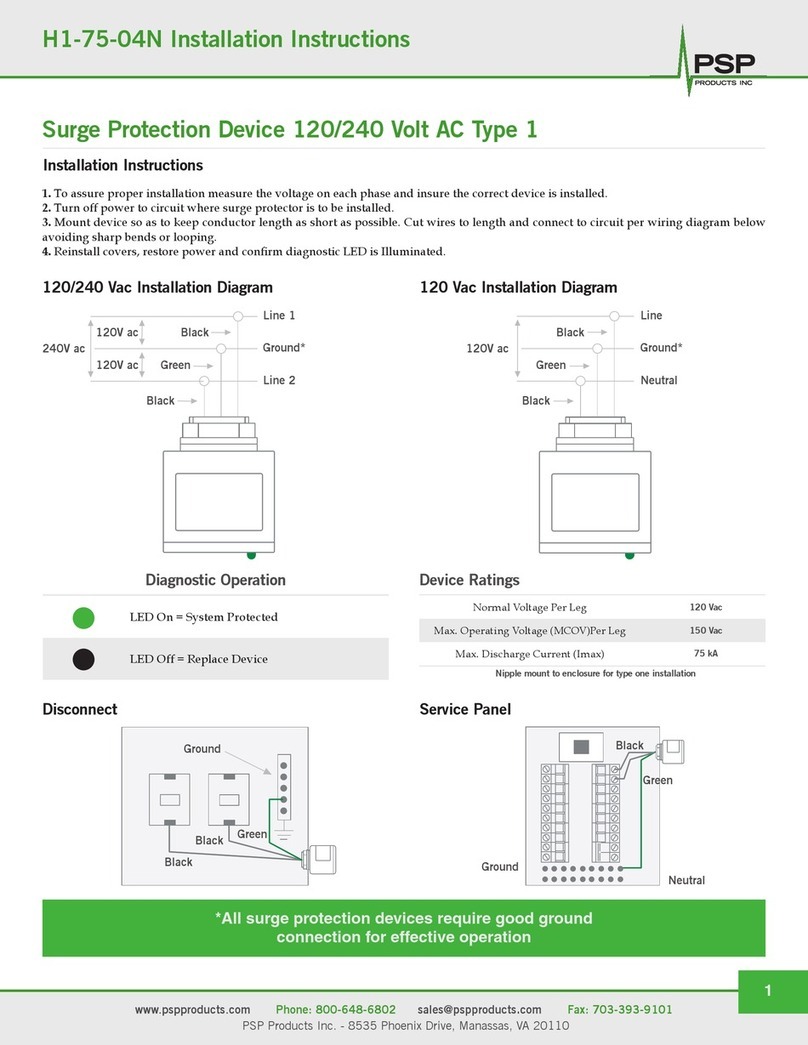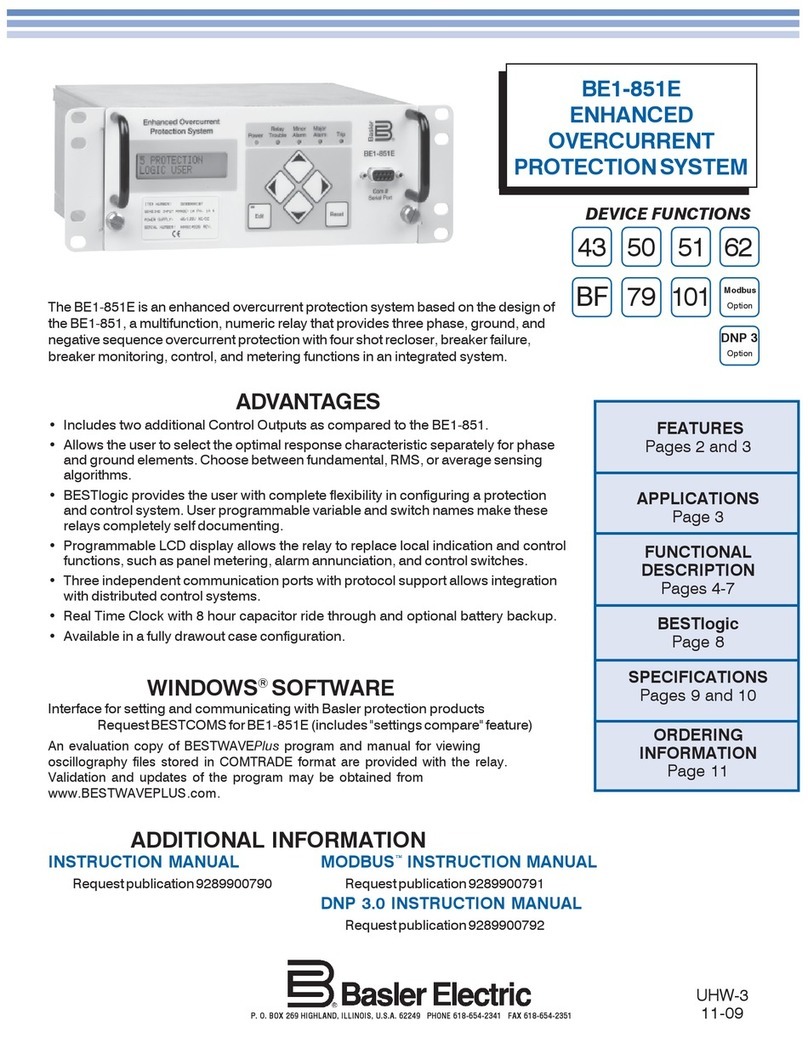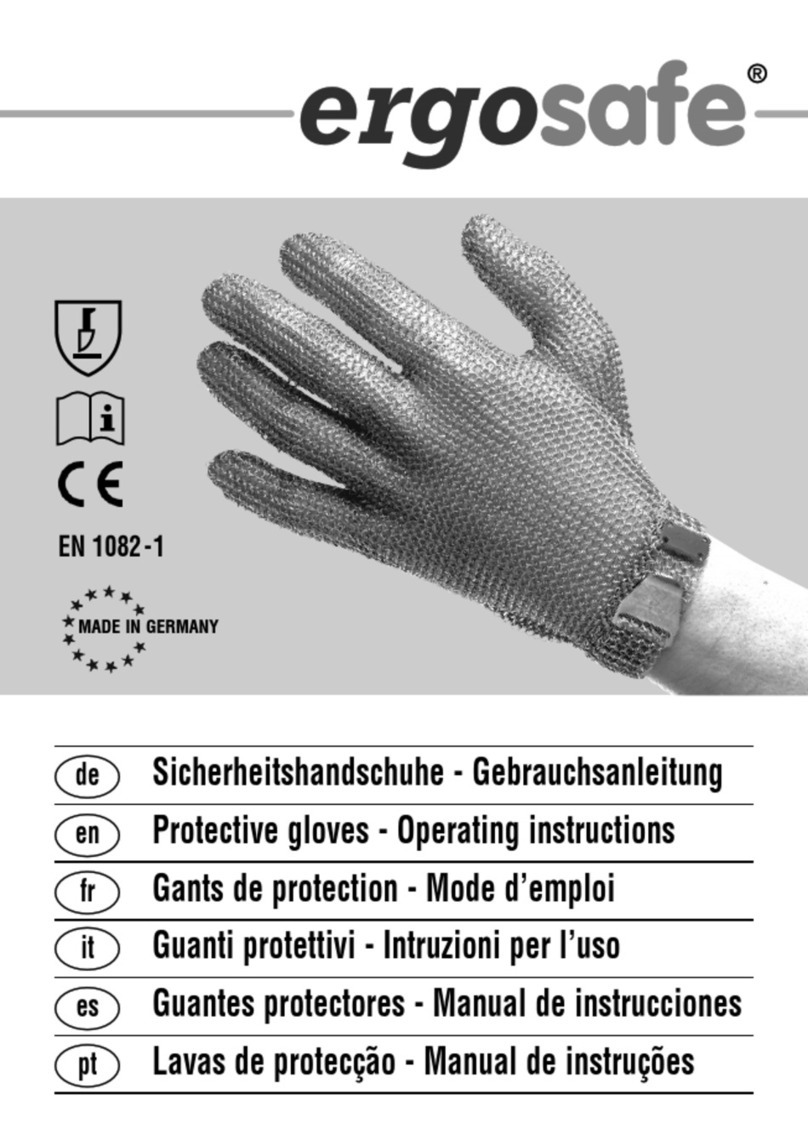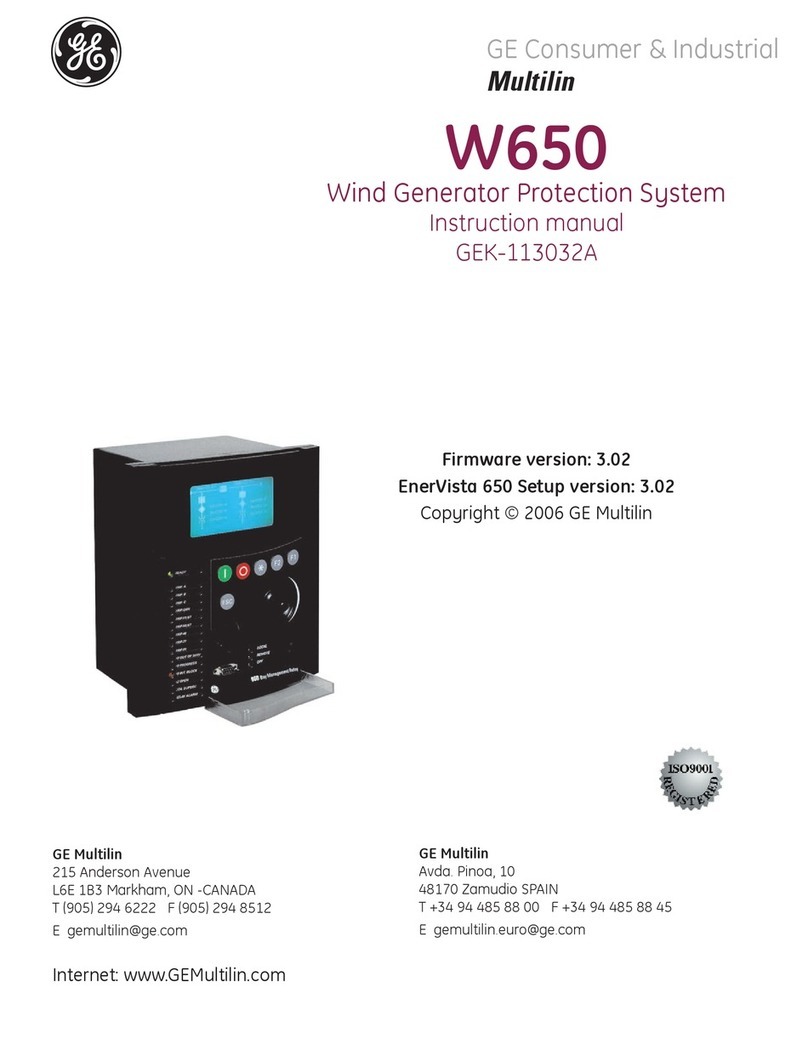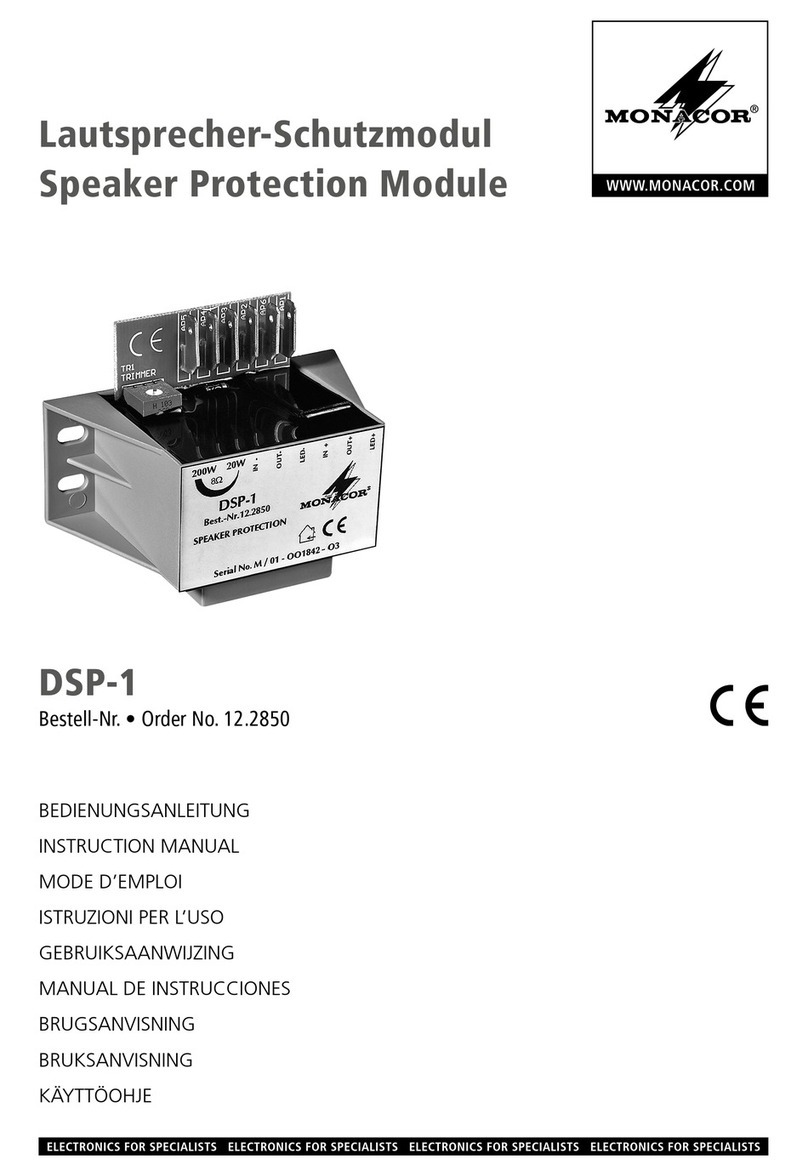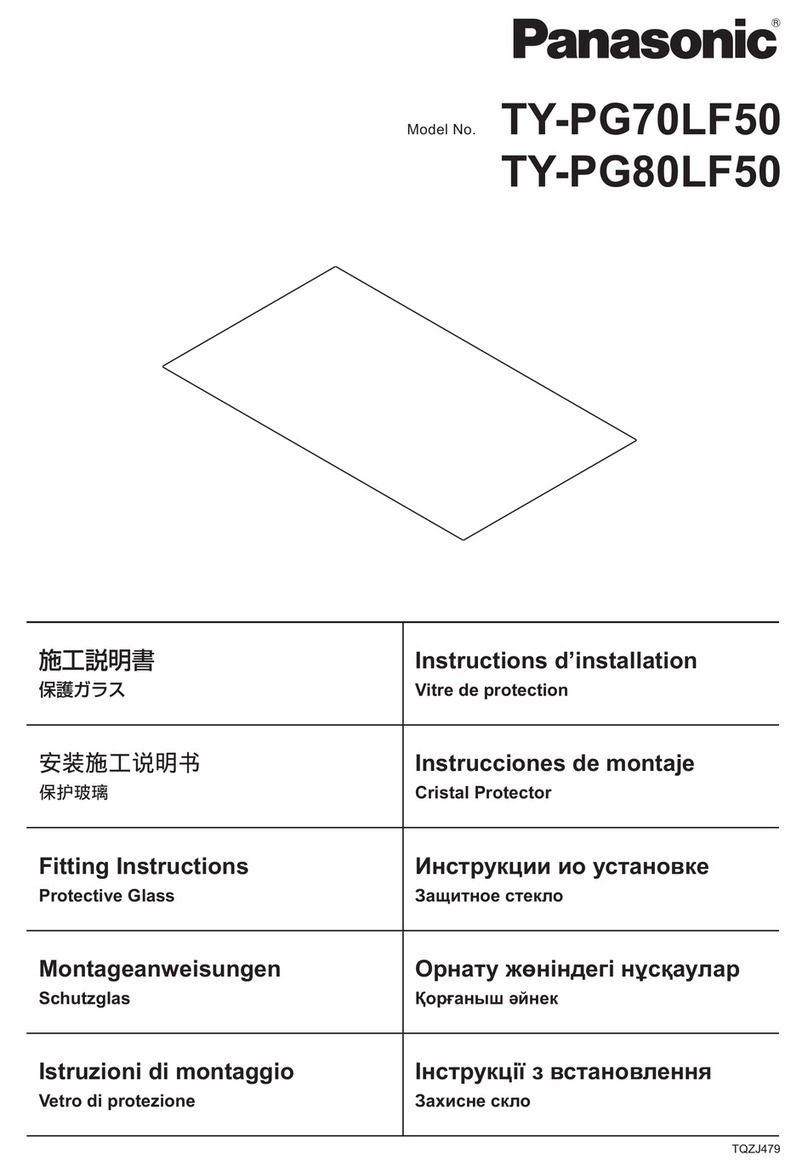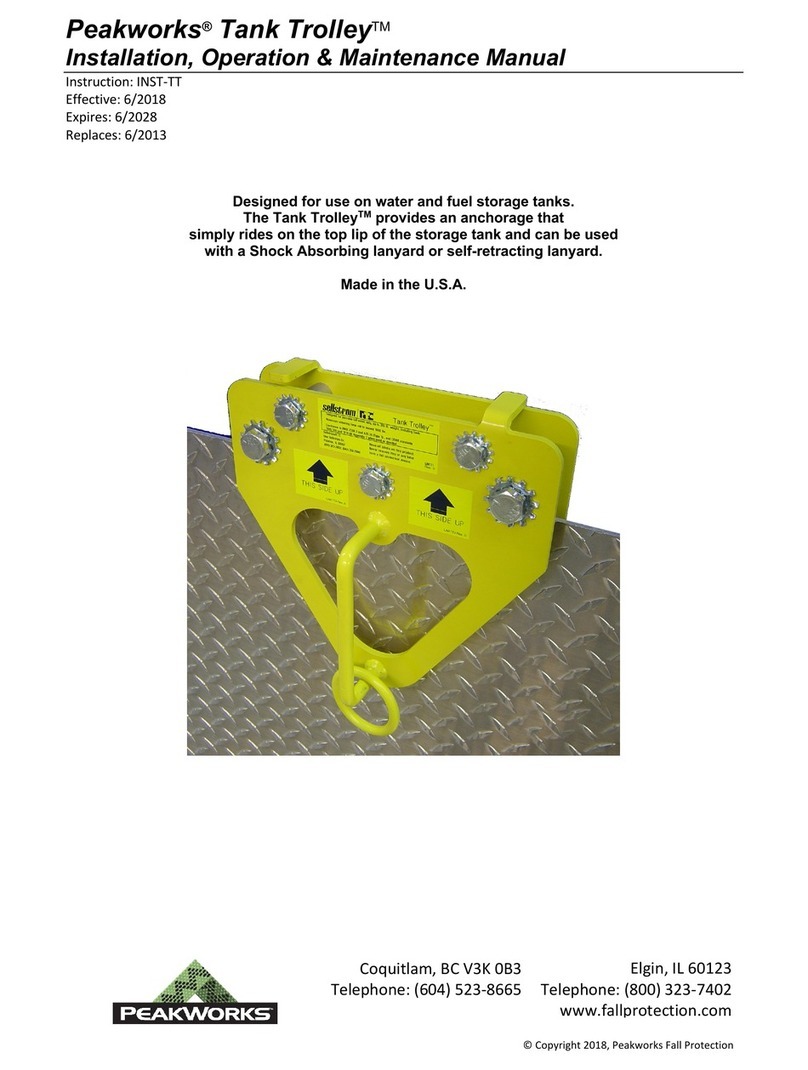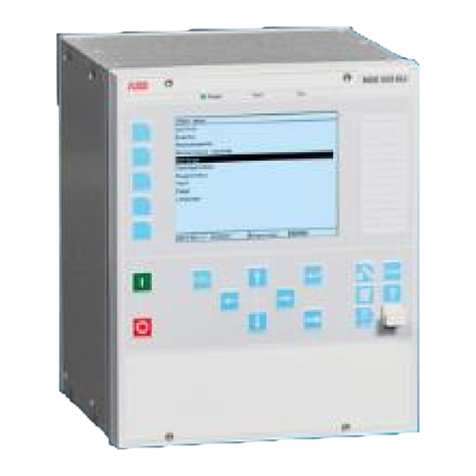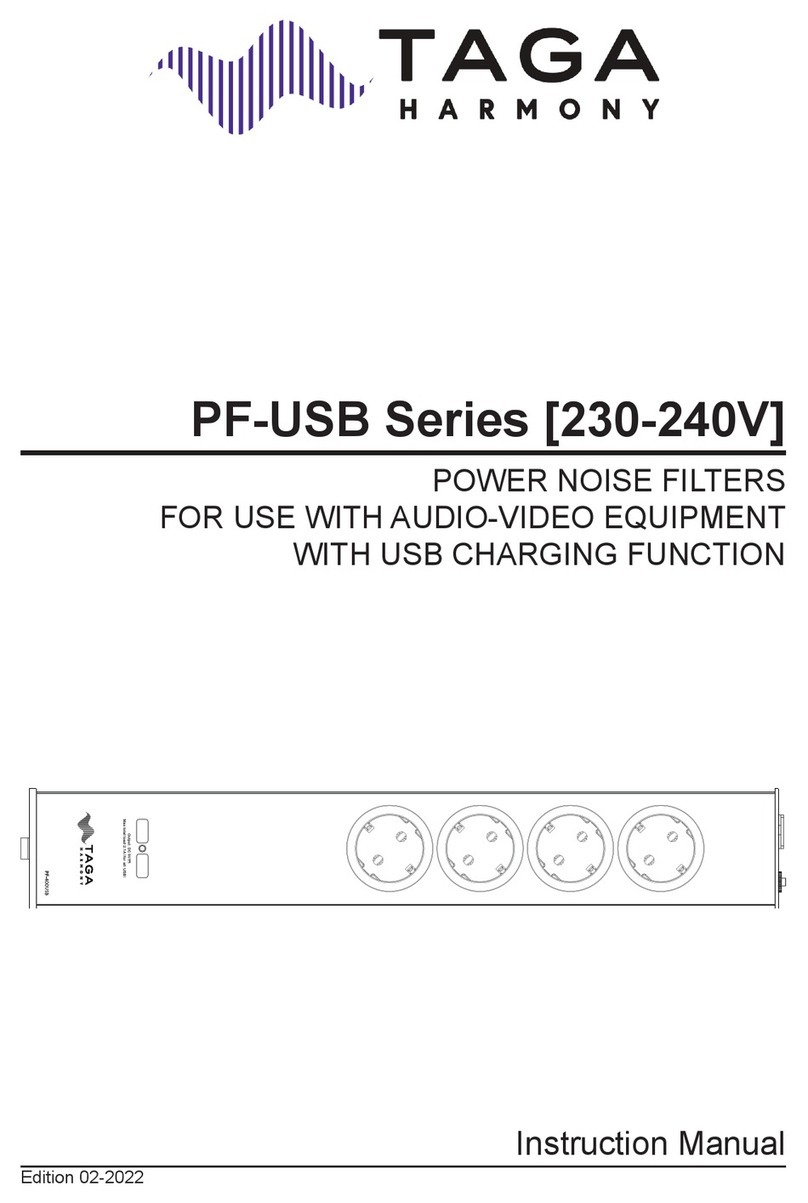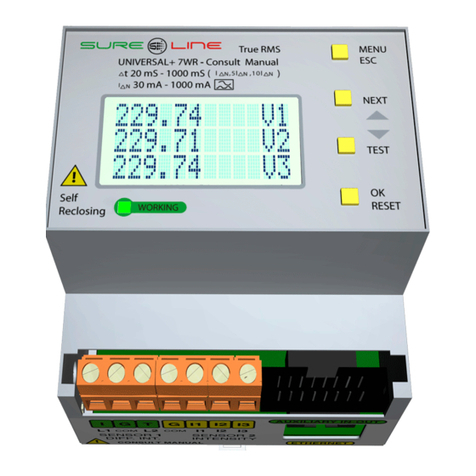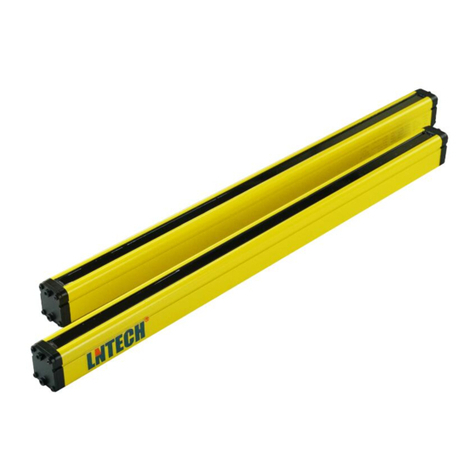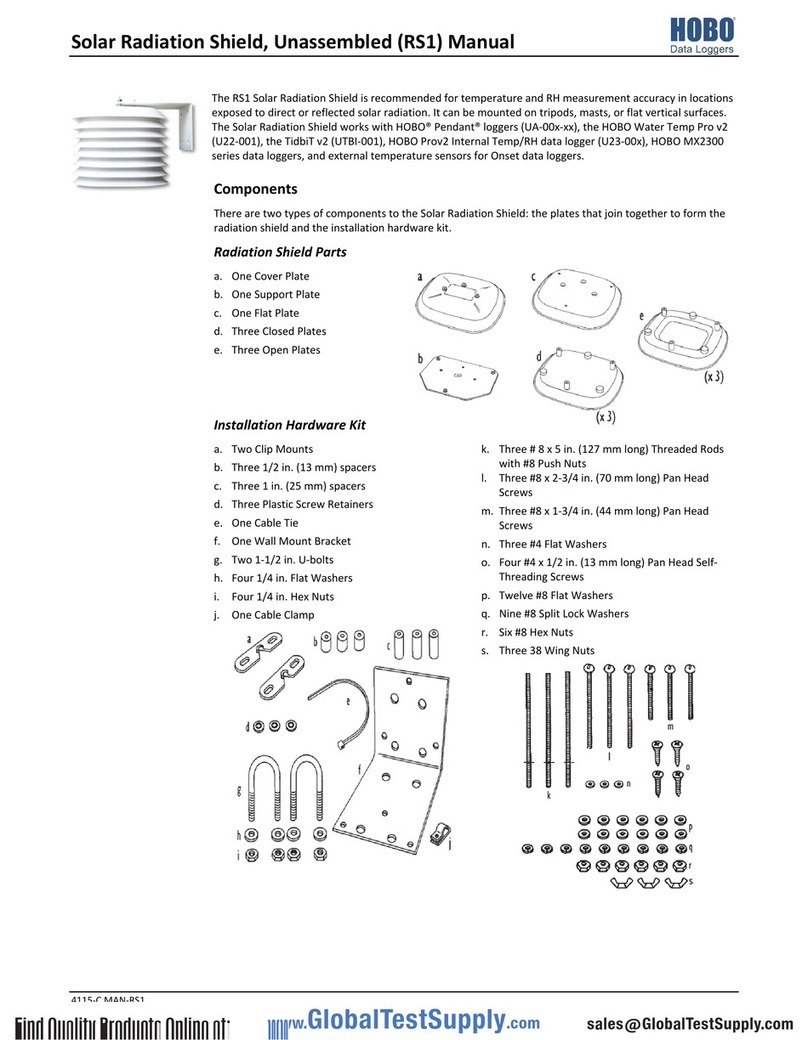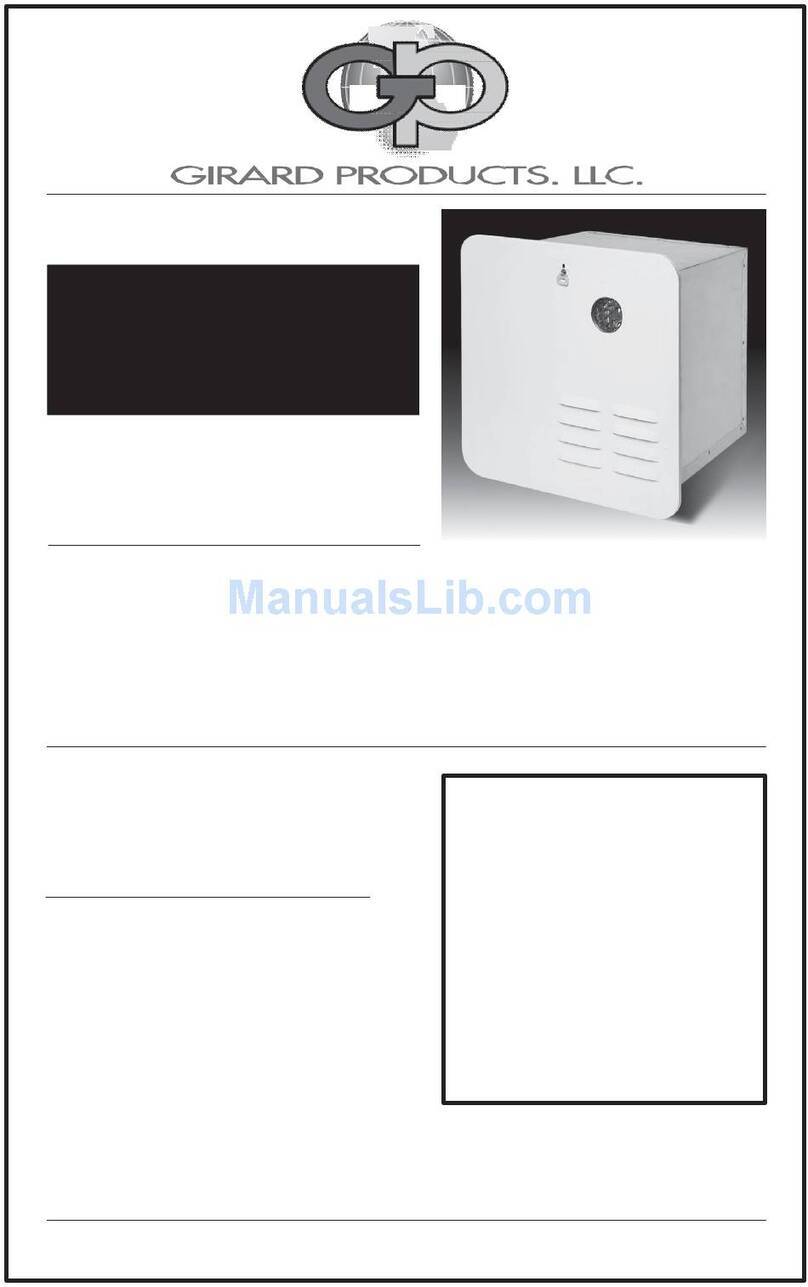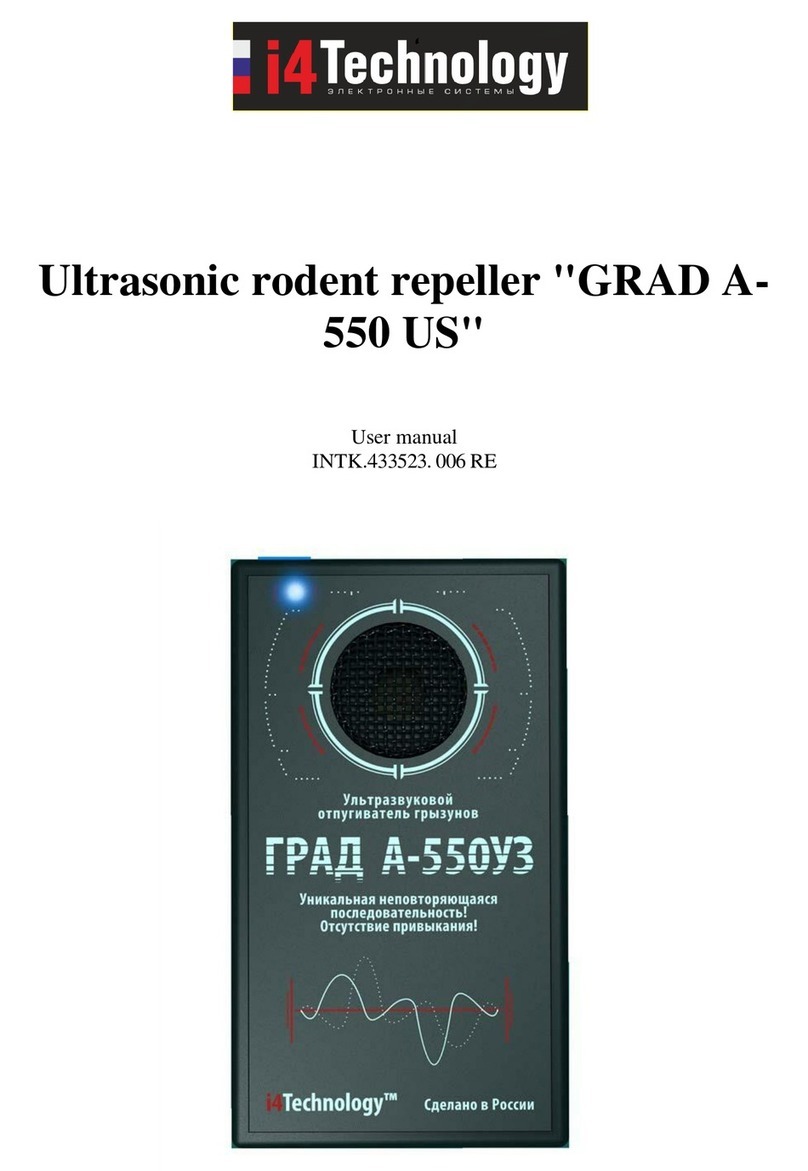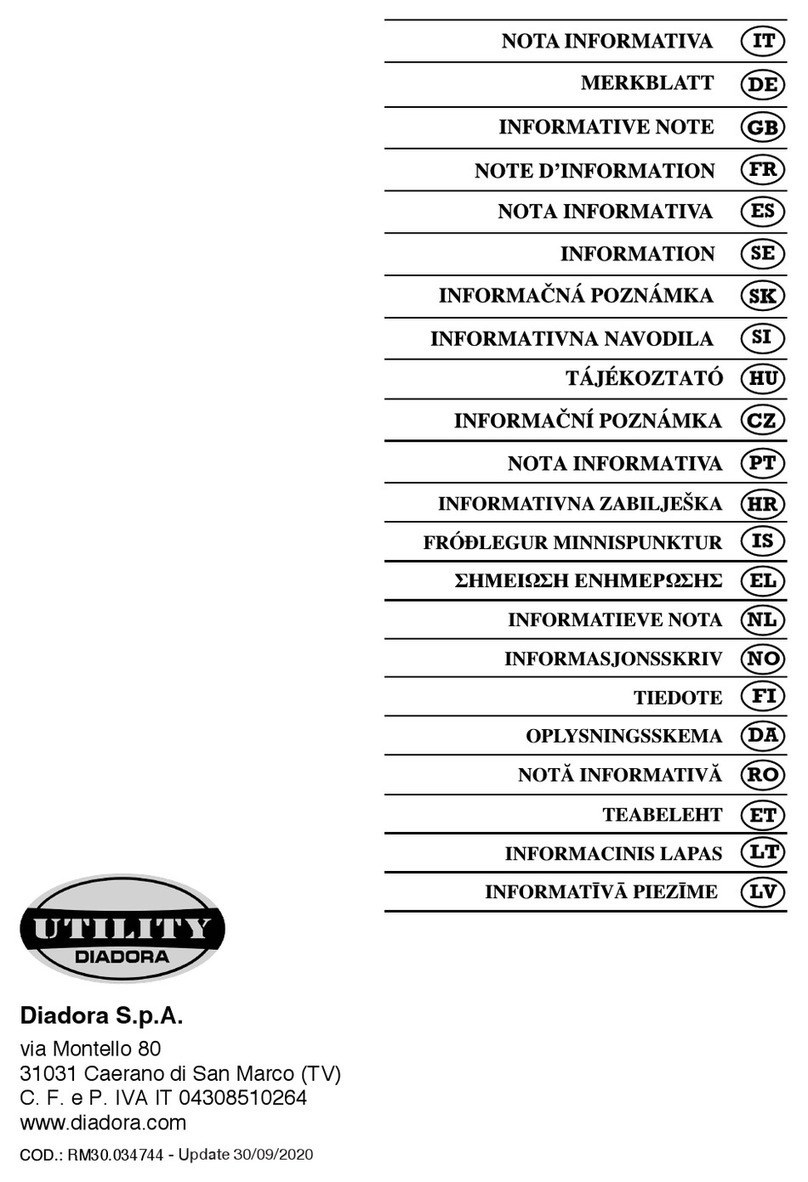BLUEMONT NOAQ Boxwall BW52 User manual

NOAQ BW52 2.1 200325
A NOAQ Boxwall is a mobile self-anchoring flood barrier. The NOAQ Boxwall BW52 creates
a dam for water up to a height of 50 cm. The boxwall is so light that it can quickly be set up
to protect buildings and other property against water damage, and also to keep roads open.
A boxwall is designed for use on a relatively even surface, such as a paved street, a concrete
floor or a lawn. The boxwall is patented in a large number of countries.
A boxwall consists of sections (boxes) that are linked together by means of a simple manual
operation. No tools are needed. For bends and corners there are certain corner boxes. There
are also gable units (BW52-GL and BW52-GR) for the finishing of a Boxwall.
Anew straight model BW52 replaces an older model BW50, but the two models are fully com-
patible. However, the corner boxes that were developed for the previous model (BW50-IC
and BW50-OC) have not been replaced by new ones.
NOAQ Boxvall BW52 (and BW50)
User instructions
Bluemont.com.au Bluemont.nz

NOAQ BW52 2.1 200325
2 (9)
Each box consists of a damming part (the rear wall), an anchoring part (the horizontal section
that rests on the ground) and a sealing part (the front edge of the horizontal section). Sealing
strips of cellular plastic are fitted under the front and side edges. Each box is also fitted with
three cellular rubber soles to create a good grip on the road.
A boxwall is built up by snapping boxes one at a time onto the previous one. The easiest
way is to work from left to right (viewed from the dry side). You should avoid working from
two directions, as it is difficult to make the two wall sections meet at exactly the same point.
As with all mobile flood barriers you need to count on a certain leakage. This can be minimized
by covering the barrier with a plastic liner. But water is also leaking through the ground under
the barrier. Water may also come to the protected area as rain and through brooks which have
been cut off by the barrier itself. Therefore one or more pumps must always be put on the
intended dry side of the barrier.
The Boxwall components can also be used to create temporary basins of various sizes,
so-called Boxpools. For the Boxpool there is a separate user instructions.
Sealing part
Beneath the front edge of
the boxwall is a sealing strip
made of cellular rubber. This
keeps the leakage of water
at the bottom to a minimum.
Anchoring part
The anchoring force is proportional to
the difference in water pressure between
the upper and lower side of the boxwall.
A system of drainage channels on the
lower side diverts the leaking water, so
that no counter pressure arises
Damming part
The rear wall dams the flood
water. The water’s pressure
is absorbed by a couple of
large bulges, which also act
as drainage channels.
This is how a NOAQ Boxwall works
The base section of the boxwall is pressed firmly against
the ground by the weight of the flood water. There are
three cellular rubber soles on the underside to provide
a reliable grip on the road.
Bluemont.com.au Bluemont.nz
Bluemont.com.au Bluemont.nz

3 (9)
BW52-GR, BW50-OC, BW50-IC, BW52, BW50, BW52-GL
Follow these instructions:
1. Inspect the area where the boxwall is to be constructed
The boxwall has been specially designed for firm, even surfaces such as asphalt, concrete,
lawns etc. It is therefore ideal for setting up on streets and paths, across car parks, in industri-
al areas, around shopping malls, in harbours and at airports. It must not be used on surfaces
that are very uneven or on ground that is prone to erosion. Inclinations of the ground of up
to 1:10 is no problem, but abrupt transitions from a surface with one inclination to an other
need to be done perpendicularly. Holes or bumps should be avoided. The straight boxes are
980 mm long but overlap one another, which means each box adds 900 mm to the total bar-
rier length (for the BW50 the corresponding numbers are 705 and 625 mm resp). A boxwall
requires a free width of 680 mm.
Loose sand and gravel must be brushed away from where the wall is to be erected. The soles
attached beneath each box have just as good a grip as the rubber soles on your shoes. If
there is sand on the road you run the risk of slipping, and the same applies for the boxwall.
The coupling between the individual boxes has a built-in flexibility of +/-3°, which means a
boxwall can be drawn in curves. For abrupt changes in direction there are certain corner
boxes. These have an angle of 30° and are available for both inward and outward corners.
The boxwall can be placed on land that is already flooded, but if the ground surface is difficult
to see through the water, you must take particular care to make sure that the boxes are not
placed on uneven surfaces, on the wrong side of surface water drains, etc
The boxes are easy to handle and move, and you can also adjust the setting of a constructed
boxwall as long as the water has not started to press firmly against the base. But you must
avoid dragging the boxes on the ground, as the sealing strips on the underside are vulnerable
to wear and may become damaged.
NOAQ BW52 2.1 200325
Bluemont.com.au Bluemont.nz

2. Lay out the boxes and connect them one by one
Start from the left (seen from the dry side) and connect the boxes one at a time to the previous
one. The boxes have a coupling mechanism (at the front) and a locking mechanism (at
the top). Tip the box slightly forwards and connect it with the previous box by inserting the
protruding ”tongue” (on the far left) beneath the ”bridge” (on the right-hand side of the previous
box).
Now tilt the box a little to the side, press down its rear edge and insert the pin of the locking
mechanism into the groove in the previous box. A good idea is to use your right foot to keep
the box tilted (see photo above) to be able to use both hands for the connection operation.
Turn the box so that the pin ends up in the middle of the groove. This is the normal position.
Straight boxes are now connected in line and corner boxes in a 30° angle. However, the
locking mechanism has a certain flexibility allowing the boxes to be turned +/-3° against one
another (see photos on next page).
On the previous model BW50 a clamp was put on each connection. This is not needed for
the BW52, nor for the corner boxes BW50-IC and BW50-OC.
To help the sealing strip underneath create a tight seal against an uneven surface, you can
place a weight on the front edge of each box, for example a stone or a sandbag. It can also
be necessary to ballast the boxes in this way if there is a strong wind, before the water arrives.
The boxwall is not very susceptible to winds coming from the front, but winds from behind
will try to lift it.
Also when deploying a boxwall in deep water the boxes need to be ballasted from start to
prevent them from floating. A difference in levels between the water in front of the boxwall
and behind it is necessary to achieve the pressure difference that keeps the barrier in place.
If you want to improve the seal, you can cover the boxwall and its connections with a specific
thin plastic sheeting, a liner. The sheeting is 2.0 m wide and can be fixed with clamps along
the upper edge and with a line of gravel or sandbags on the ground in front of the front edge.
By covering the boxwall with a plastic liner it can also be used on a much more uneven ground,
as the liner is more flexible.
4 (9)
NOAQ BW52 2.1 200325
Locking mechanism
Coupling mechanism
Bluemont.com.au Bluemont.nz

Assembly position 3° in one direction Normal position 3° in the other direction
3. Corners
To create corners there are a couple of corner elements, one for outward corners and one for
inward ones. Both have an angle of 30°, so three connected boxes make a 90° angle. Corner
boxes can easily be connected to straight boxes, and with one another, as they all share the
same coupling mechanism.
Outward corner boxes may be used to protect a single object, like a detached building. To sur-
round a rectangular area, 4 x 3 outward corner boxes for the corners can be combined
with an appropriate number of straight boxes for the sides.
Inserting corner boxes at appropriate positions in a boxwall makes it possible to let it pass
around different kinds of obstacles, turn in an intersection etc.
Inward corner boxes can also be used to build up temporary basins. 12 boxes are enough
to build a circular pool, a ”NOAQ Boxpool” (se separate user instructions). By combining the
corner boxes with a number of straight boxes a basin of any desired size can be deployed.
5 (9)
NOAQ BW52 2.1 200325
Bluemont.com.au Bluemont.nz

Connection using corner boxes.. Connection using a gable.. Using a piece of liner for sealing
4. Connect to wall or facade
When a boxwall needs to end in deep water, like against a wall or a facade, the outermost
box may need to be supported. If the boxwall is connected alongside a wall or at an oblique
angle to it, it is provided with support by the wall itself.
If the boxwall approaches the wall in a right angle or in a sharp angle, one or more inward
corner boxes can be used to let the boxwall make a turn up along the wall. See photo above.
An other possibility for connections in a right angle is to use a gable, a boxwall element that
has a vertical side. The gables come in two versions, a left hand gable and a right hand
gable. The coupling mechanism is the same as for the other boxvall elements.
The connection between the boxwall and the facade may need to be sealed, and this is prefer-
rably done by using a plastic liner. A such can be ordered as an accessory to the boxwall.
The plastic sheet is attached up against the facade, and to the boxwall. Make sure that the
liner protrudes somewhat in front of the boxwall and fix it to the ground. If the liner is thin
enough it will adapt to irregularities in the ground and in the facade as the water rises and
the water pressure increases.
5. Kerb stones
Kerb stones or stairs can be passed using a couple of gables. The passage must be done perpendicular-
ly. When climbing upwards a right hand gable is connected to the end of the boxwall and is abutted aga-
inst the kerb stone, A new boxwall section, with a left hand gable in the end, is deployed on the higher
level. The two gables, now vertically offset, are screwed together through the vertical slot that all gables
have. Also when descending from a higher to a lower level a right hand gable is used to end the first box-
wall part, and is connected to its twin on the lower level.
To reduce leakage sealing may need to be improved between between the gables and the
kerb stone. Also in this case a piece of liner can be used.
6 (9)
NOAQ BW52 2.1 200325
Bluemont.com.au Bluemont.nz

7 (9)
NOAQ BW52 2.1 200325
Left hand and right hand gables Gables to cope with kerb stones Drag the boxwall behind gullies
6. Length adjustments
If a boxwall needs to have an exact length, for example between two buildings, there are
different options for adjusting this. As the boxes can be coupled in angles of up to +/-3°
a straight boxwall can be shortened by deploying it in a slight arch between the end points.
An other option is to insert some corner boxes, either in the middle of the boxwall, or towards
the end of it. A third way to span a gap of exact width is to put a straight boxwall a little
obliquely.
7. Pump away leaking water
When using mobile flood barriers you always need one or more pumps to pump away
the water that will collect on the intended dry side of the barrier. A certain leakage will always
occur, through the barrier, under the barrier and also through the ground itself. Upon this
comes rain water that runs down towards the barrier but cannot reach the river or the lake
as the barrier itself blocks the way. If the ground is level or if it slopes towards the flood, this
water must be pumped clear with a pump. If the ground slopes away from the flood (e.g. on
the crown of permanent embankments), the water will run away without the need for pumps.
Water leaking through or under a mobile flood barrier is no problem as long as the pumping
capacity is sufficient. When needed the leakage rate can be reduced by covering the barrier
with a liner. NOAQ is supplying a suitable liner that is 2 meters wide liner and 75 meters long.
Be aware of any surface water drains or manholes and try to lay the boxwall behind such.
If there is a risk that culverts might lead flood water under the barrier and into the protected
area, these channels must be plugged or blocked.
8. Combine boxwall and tubewall
A NOAQ Boxwall can be combined with a NOAQ Tubewall. The walls are laid so that they
overlap by a metre or so, ideally with the tubewall closest to the flood and the boxwall beneath
and behind the tubewall. One or a pair of the tubewall’s joint covers are used to form a seal
between the two wall sections.
Bluemont.com.au Bluemont.nz

8 (9)
NOAQ BW52 2.1 200325
9. Flash flooding
The boxwall can also be used in flash flooding, when water is running fast over the streets.
When this happens the most obvious measure is to protect low entrances and vulnerable
objects by redirecting the water flow toward areas where flooding will cause less damage.
A similar situation can occur when snow is melting, and the water tries to take unacceptable
routes. As for the use in calm water, the boxwall should only be used on firm and even
surfaces.
If water is already running fast at the place of the intended action, a first measure may be
to place a number of boxes in the water flow, to break down the speed of it and reduce its
power. Put the boxes close to each other, facing upstream, but do not try to connect them.
They will be anchored directly by the weight of the water entering upon them.
Behind this protective row of boxes a continuous boxwall is then assembled. When the box-
wall is completed, the front row of boxes can be removed.
This way the boxwall can be used to lead away watermasses in a controlled manner down
the streets, hereby reducing water levels and flood problems upstream. To divert the water
off the street the boxwall may be deployed diagonally. The angle chosen, in relation to the
direction of the current, depends on the amount of water and the speed of it.
10. After use
Disconnect the boxes. By tilting the right hand box (the one with the pin) against the left hand
one, they are easily disconnected.
Rinse the boxes clean using a garden hose or by rinsing them in water, and stand them on
their side to dry (when they are placed on the side the water runs off more quickly from the
pores in the sealing strip). If there is a risk of temperatures falling below zero, the boxes
must be taken indoors and stored in a heated area until all “soft parts” (soles and sealing
strips) have dried out properly.
Inspect all soft parts. Damaged or worn sealing strips can be replaced, but if the soles have
suffered big damage, the entire box should instead be replaced.
The boxes can be stacked to take up as little space as possible during transport and storage.
Bluemont.com.au Bluemont.nz

9 (9)
NOAQ BW52 2.1 200325
Important!
Floods result from a course of events controlled by forces of nature that can only be controlled
to a limited degree. Furthermore, no two events are the same, which means that all protective
equipment must be used not only with good knowledge of its function and limitations, but
also with generally sound judgement. Those who provide the equipment, manufacturers,
resellers, hirers, etc. can never accept liability for the actual use and any possible personal
injury or damage to property that might arise.
26 boxes (straight or corner ones) fit on standard pallets 800 x 1200 mm. Gables are delivered in cardboard boxes.
Bluemont.com.au Bluemont.nz
This manual suits for next models
1
Table of contents
